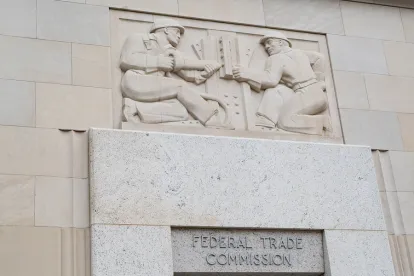So you received a Civil Investigative (CID) from the Federal Trade Commission related to a consumer protection matter. Now what?
On January 19, 2018, Thomas B. Pahl, Acting Director, FTC Bureau of Consumer Protection provided responses to questions that the agency frequently hears from companies that have received CIDs in order to shed some light on internal procedures.
The FTC recently announced reforms to its civil investigative demand process designed to streamline information requests and improve transparency in agency investigations.
The process reforms set forth by the FTC include: (i) providing plain language descriptions of the CID process and developing business education materials to help small businesses understand how to comply; (ii) adding more detailed descriptions of the scope and purpose of investigations to give companies a better understanding of the information the agency seeks; (iii) where appropriate, limiting the relevant time periods to minimize undue burden on companies; (iv) where appropriate, significantly reducing the length and complexity of CID instructions for providing electronically stored data; (v) where appropriate, increasing response times for CIDs (e.g., often 21 days to 30 days for targets, and 14 days to 21 days for third parties) to improve the quality and timeliness of compliance by recipient; and (v) ensuring companies are aware of the status of investigations by adhering to the current practice of communicating with investigation targets concerning the status of investigations at least every six months after they comply with the CID.
Even with the FTC’s reforms, the process can be a daunting one.
The FTC mission is to promote competition and protect consumers from deceptive or unfair practices, to educate consumers and provide guidance for businesses. The Bureau of Consumer Protection is the office within the FTC responsible for consumer protection matters.
What is a Civil Investigative Demand?
A CID is a type of subpoena. It is a judicially enforceable legal document that seeks documents or other information related to an FTC investigation. The FTC issues CIDs to obtain information from companies it thinks may have violated the law. The agency also sometimes sends CIDs to obtain information from others who are not the subjects of investigation, but who may have information related to the subjects of ongoing investigations.
What Should You Do Upon Receipt of CID?
Do not panic or attempt to liaise with the FTC on your own. Consult an experienced Federal Trade Commission defense attorney at the outset that has solid relationships with the regulatory enforcement community and the procedural know-how to position the matter for efficient, optimal resolution (e.g., outright investigation closure or pre-suit settlement negotiation).
As discussed by Mr. Pahl, an initial meeting (“meet and confer”) with the FTC staff attorney identified in the CID to discuss preliminary issues must take placed no more than 14 days after you receive the CID.
What Happens at the “Meet and Confer”?
Your attorney will ask questions about the purposes of the CID and attempt to narrow its scope. Experienced consumer protection defense counsel will also attempt to elicit information from FTC staff about the purpose of the investigation, negotiate extensions of time, and reduce compliance costs and burdens.
As confirmed by Mr. Pahl, the “meet and confer” is also an opportunity to discuss the production of electronically stored information. A CID recipient should be prepared to inform its counsel about recordkeeping and information management system.
A Civil Investigative Demand Does Not Mean That You Are Being Sued.
As confirmed by Mr. Pahl, some recipients of CIDs are not the subjects of FTC investigation, but instead are third parties who have documents or other information that relate to others who are subjects of FTC investigations.
Even if you are the subject of an FTC investigation, a CID is the first step in an investigation.
In many instances, once FTC staff attorneys have reviewed the responsive documents provided, the agency will close the investigation without further action. Other times, however, FTC staff will approach the company about negotiating a possible legal settlement. Choosing amongst FTC defense lawyers with industry-specific experience is critical. If a settlement cannot be reached, the FTC may choose to initiate a lawsuit.
What Law Does the FTC Think Has Been Violated?
The CID identifies the subject matter of the investigation and describes the nature of the conduct the FTC staff is investigating.
In addition, the CID cites the Federal Trade Commission Act or other laws or rules that may have been violated. The FTC Act prohibits “unfair or deceptive acts or practices in or affecting commerce.”
The FTC’s Rules of Practice are published in the Code of Federal Regulations. Part 2 of the Rules, which deal with investigations and CIDs, is available online.
What Will the FTC do With the Documents?
The FTC will use the documents to conduct its investigation and, if appropriate, in an FTC law enforcement action.
As confirmed by Mr. Pahl, the agency will not disclose them under the Freedom of Information Act. The agency will not tell consumers, competitors, private attorneys, or members of the press about our investigation, although it may share documents where necessary with its experts and potential witnesses.
Unless the FTC uses the documents in an FTC action, it will not publicly disclose the documents – or even the existence of an investigation – without consent, except in response to a request from Congress or a Congressional committee or subcommittee, a request from a law enforcement agency for official law enforcement purposes, or as required by law.
If the FTC does intend to use the documents in an FTC action, it will provide advance notice in the event that an order from a court to protect the documents from public disclosure is desired.
FTC Review of Documents Sent in Response to a CID.
FTC staff will review the documents and periodically communicate with your attorney. It often takes months for the FTC to thoroughly evaluate the documents and other information related to the investigation.
According to Mr. Pahl, “[w]e owe it to you – and to the public – to study the matter carefully and thoughtfully. At any point, you’re welcome to contact FTC staff for a status update. In addition, it’s our practice to reach out to you no later than six months after you have completed your response to give you a status update and to get back to you periodically after that.”
Suspension of Document Destruction.
After you receive a CID, you must stop procedures that would destroy documents that could reasonably relate to the investigation and you must take steps to maintain documents that are relevant to the investigation, regardless of whether you believe the documents are protected from discovery by legal privilege or some other reason.
Not Responding to a CID.
The FTC can go to court to ask a judge to compel you to turn over documents or information. As confirmed by Mr. Pahl, the FTC does not prefer this approach. Going to court to enforce a CID increases costs and causes delays for everyone involved. If there is a particular specification in the CID that causes you concern, the FTC prefers to discuss it during the “meet and confer” process.
According to the FTC Rules of Practice, within 20 days after you are served with the CID you may file a petition to limit or quash – in other words, you may ask that the CID be narrowed or withdrawn altogether.
One of the FTC Commissioners will review your petition and will either: (i) grant the petition and limit or quash the CID; or (ii) deny the petition.
The procedure is explained in the FTC’s Rules of Practice at 16 C.F.R. § 2.10. The FTC wants to resolve concerns as quickly and inexpensively as possible and will not consider a petition to limit or quash unless concerns have already been discussed at the “meet and confer.”
If you plan to file a petition to limit or quash certain portions of the CID, you must file a response to the other portions of the CID by the deadline. Petitions to limit or quash a CID – and the FTC’s decision – are public documents that will be placed on the FTC’s public record.
Takeaway: The FAQs apply to CIDs about FTC consumer protection investigations. The process may be different for FTC competition matters, which elated to antitrust laws. Properly reacting to the receipt of an FTC CID and the manner in which a focused, substantive legal response is persuasively presented can make the difference between investigation closure and the initiation of regulatory enforcement proceedings.




 />i
/>i

